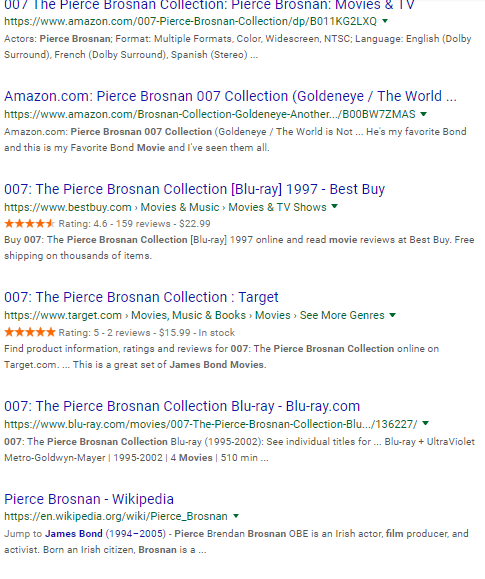A Tale of Two Searches
You might have heard about long-tail searches, but you’re not quite sure what they are or why they matter. As EVG’s in-house SEO Director, I’d like to explain that and then tie it into user intent (what a user hopes to accomplish when they use long- or short-tail search queries) and what that means for how your pages are optimized.
A short-tail search is a search query that uses one or two words (“fantasy books”), and a long-tail search uses three or more words (“best young adult fantasy book series”).
Short-tail Searches
Generally, someone using a one- or two-word search query is looking for information about something, and is not necessarily ready to purchase it. They want to learn about the subject of their search. In marketing terms, we say they’re higher up in the sales funnel, still acquiring information.
 Examples of short-tail searches, where a user is most likely just looking for information include:
Examples of short-tail searches, where a user is most likely just looking for information include:
- 2019 Mustang
- Tulips
- Star Wars
- California colleges
- Eiffel tower
- James Bond
The results for searches like these will be very broad. For example, when I searched for “eiffel tower,” I see ads for purchasing tickets, recent Tweets about the monument, a set of images, and a list of organic results full of facts and historical data about the Eiffel Tower. Google is assuming (based on lots of data it’s gathered!) that users are looking to learn more about the Tower, so it’s returning lots of options to do just that!
Long-tail Searches
Long-tail searches on the other hand, reflect a more focused search for information. These types of searches generally suggest the user has a specific type of information they’re seeking.
If they’re linked to eCommerce, we see long-tail searches as a point in time when the user is more likely to make a purchase.
 Examples of longer-tail searches, where a user is more likely to convert, also suggest the type of information they’ve been gathering through their previous searches:
Examples of longer-tail searches, where a user is more likely to convert, also suggest the type of information they’ve been gathering through their previous searches:
- Black 2019 Mustang with pony package
- When to plant tulips
- When does the new Star Wars movie come out?
- Best California college for economics major
- When to visit the Eiffel tower
- Pierce Brosnan James Bond movie collection
The search results for the query “Pierce Brosnan James Bond movie collection” versus “James Bond” are much more focused.
Of course, there are exceptions, but as a general rule, those who use more words are closer to making a decision about what they want. Your goal as a business is to meet the goals of both sets of users based on their intent.
Short-tail Intent #1: Learn
If the intent of a person using a short-tail search is to learn more about something, then your goal as a relevant brand is to be an authority on the topic by providing them with trustworthy content that educates. Give the user what best serves their purpose, whether that’s an image (a shiny new Mustang with interior/exterior pictures), a list, a short answer, or a long description. Make sure your content answers all the questions users have, and then direct them to the next step in the funnel. (Link to a page about the driving experience in a shiny new Mustang or blogs about its latest features.)
So, for the user searching “James Bond,” you might have a page with the history of the Bond character and with options to click on the series (based on actor) that you want to learn more about. Each of those might then link to a collection with the option to make a purchase.
Long-tail Intent #2: Convert
If the intent of the person using a long-tail search is to convert, then your goal should be to make that a seamless process. And remember, they might not convert RIGHT AWAY. The sales cycle is longer for buying a car than buying tulips! So remember that often, a user is going to get all their information, take mental notes, think about it, and then decide to make the purchase later. (Hint: consider retargeting to keep the item fresh in their minds!)
For those searching for “When does the new Star Wars movie come out,” you’ll want to provide the movie’s release date and offer an easy option to “purchase advance tickets” or “find a theater near you.” If they’re conducting this type of search, it’s relatively easy to convert them into making a purchase if you don’t make it difficult for them to find what they are searching for.
The bottom line when you’re deciding how to optimize your content is remembering the goal is to match your content to the intent and needs of the person searching for answers. If it’s informational, be thorough and authoritative. If it’s transactional, make it a seamless, user-friendly process. But above all, think about the two as one multistep process that needs high-quality content at every step of the way.
If you’d like to learn more about how I can help your content convert searchers, please contact me.
Laura Lee – SEO Director & Account Manager



